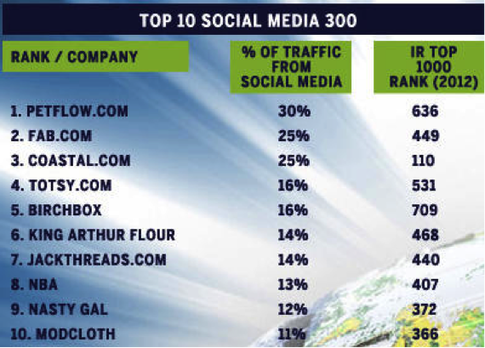
Social Media marketing works and smaller is better…
Small digital-only retailers are more effective at using social media than the large, more established retail houses, some driving up to 30% of their traffic from social media marketing only.
That the big e-retailers are not to be found in the top 10 leaders in social marketing should not surprise us. Clay Christensen’s “disruptive innovation” concept is once again at play here. For a refresher of this famous business concept visit Clay Christensen’s website (http://www.claytonchristensen.com/key-concepts/), or open his book, “The Innovator's Solution: Creating and Sustaining Successful Growth.”
Social media is being disruptive to the advertising market. Traditional advertising, whether online or off, is too expensive and the small guys are turning to social media for inexpensive — essentially free — ways to drive awareness and traffic to their sites. In the meantime, large companies on their “sustaining” path get larger and larger marketing budgets, doing more and more expensive and sophisticated marketing campaigns. And I don’t know any marketing executive who would request willfully a smaller size budget than his or her prior year budget. Unfortunately power and influence within an organization is more tightly correlated to the size of one’s budget, and more loosely so to one’s performance.
So, not surprisingly the best at social media are the “relatively new, small to mid-sized, web-only merchant.” According to the Internet Retailer Social Media 300, petflow.com and fab.com would derive about a third of their revenues from social networks. Big e-retailers should take notice and learn from it.
~~~~~~~~~~~~~~~~~~~~~~~~~~~~~~~~~~~~~~~~~~~~~~~~~~~~~~~~~~~~~~~~~~
The leaders in social commerce are not the usual suspects
Internet Retailer’s Social Media 300 reveals that smaller web-only merchants are beating out Amazon and Wal-Mart in social media marketing.
By Stefany Moore
Internet Retailer
01/03/13
Here’s what the leaders in social media marketing and commerce look like: they are small to mid-sized web-only merchants, relatively new to online retailing. They are putting social media at the forefront of their business strategies. And they are growing fast as a result.
The Social Media 300, Internet Retailer’s new publication available today, is a comprehensive analysis of e-retailers’ social commerce strategies and a first-ever ranking of retailers’ social skills based on the percentage of web site traffic merchants receive from social networks—a key measure of how effective e-retailers are at social media marketing and commerce.
The research shows that merchants don’t need to have large staffs or big budgets to be successful in social media marketing. Quite the opposite, in fact, as nine of the top ten retailers in the guide brought in less than $30 million in online sales in 2011.
Merchants at the top of the Social Media 300, like pet food supplies retailer PetFlow.com (No. 1), design-inspired flash sale newcomer Fab.com (No. 2) and baking flour maker and e-retailer King Arthur Flour (No. 6), are generating significant returns by making social media a priority. They are adept at weaving social connections into many aspects of the shopping experience, and have found innovative ways to find new customers via social networks and then to connect with these and existing customers on a personal level.
Read the full article here
Small digital-only retailers are more effective at using social media than the large, more established retail houses, some driving up to 30% of their traffic from social media marketing only.
That the big e-retailers are not to be found in the top 10 leaders in social marketing should not surprise us. Clay Christensen’s “disruptive innovation” concept is once again at play here. For a refresher of this famous business concept visit Clay Christensen’s website (http://www.claytonchristensen.com/key-concepts/), or open his book, “The Innovator's Solution: Creating and Sustaining Successful Growth.”
Social media is being disruptive to the advertising market. Traditional advertising, whether online or off, is too expensive and the small guys are turning to social media for inexpensive — essentially free — ways to drive awareness and traffic to their sites. In the meantime, large companies on their “sustaining” path get larger and larger marketing budgets, doing more and more expensive and sophisticated marketing campaigns. And I don’t know any marketing executive who would request willfully a smaller size budget than his or her prior year budget. Unfortunately power and influence within an organization is more tightly correlated to the size of one’s budget, and more loosely so to one’s performance.
So, not surprisingly the best at social media are the “relatively new, small to mid-sized, web-only merchant.” According to the Internet Retailer Social Media 300, petflow.com and fab.com would derive about a third of their revenues from social networks. Big e-retailers should take notice and learn from it.
~~~~~~~~~~~~~~~~~~~~~~~~~~~~~~~~~~~~~~~~~~~~~~~~~~~~~~~~~~~~~~~~~~
The leaders in social commerce are not the usual suspects
Internet Retailer’s Social Media 300 reveals that smaller web-only merchants are beating out Amazon and Wal-Mart in social media marketing.
By Stefany Moore
Internet Retailer
01/03/13
Here’s what the leaders in social media marketing and commerce look like: they are small to mid-sized web-only merchants, relatively new to online retailing. They are putting social media at the forefront of their business strategies. And they are growing fast as a result.
The Social Media 300, Internet Retailer’s new publication available today, is a comprehensive analysis of e-retailers’ social commerce strategies and a first-ever ranking of retailers’ social skills based on the percentage of web site traffic merchants receive from social networks—a key measure of how effective e-retailers are at social media marketing and commerce.
The research shows that merchants don’t need to have large staffs or big budgets to be successful in social media marketing. Quite the opposite, in fact, as nine of the top ten retailers in the guide brought in less than $30 million in online sales in 2011.
Merchants at the top of the Social Media 300, like pet food supplies retailer PetFlow.com (No. 1), design-inspired flash sale newcomer Fab.com (No. 2) and baking flour maker and e-retailer King Arthur Flour (No. 6), are generating significant returns by making social media a priority. They are adept at weaving social connections into many aspects of the shopping experience, and have found innovative ways to find new customers via social networks and then to connect with these and existing customers on a personal level.
Read the full article here
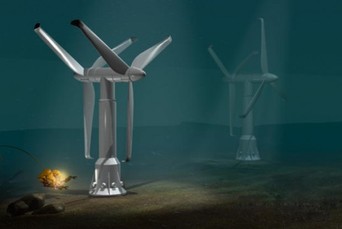

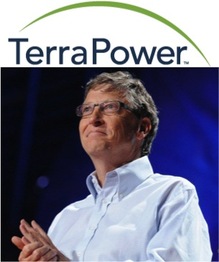

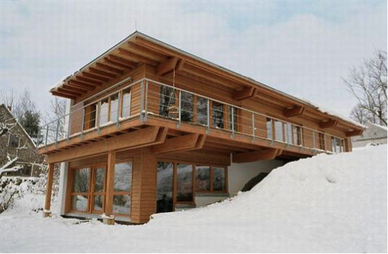
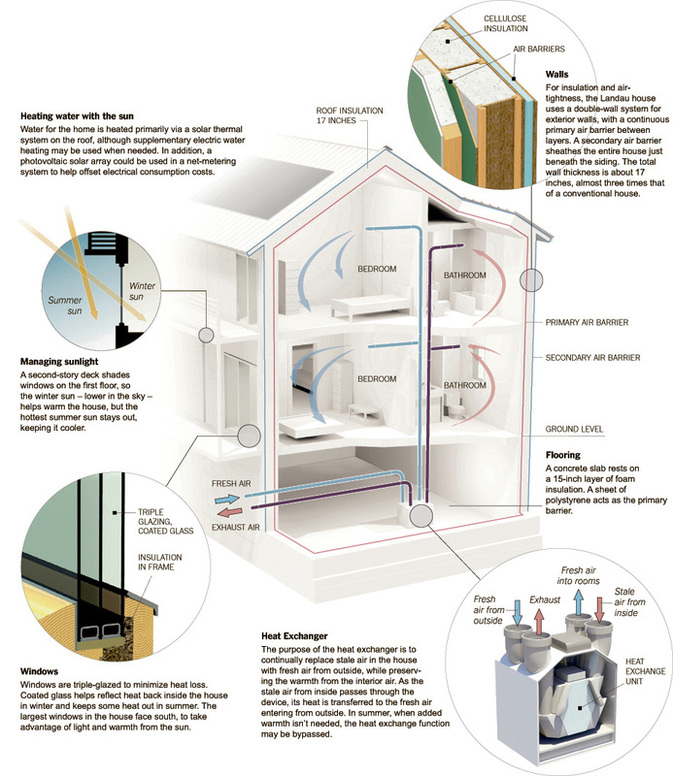

 RSS Feed
RSS Feed